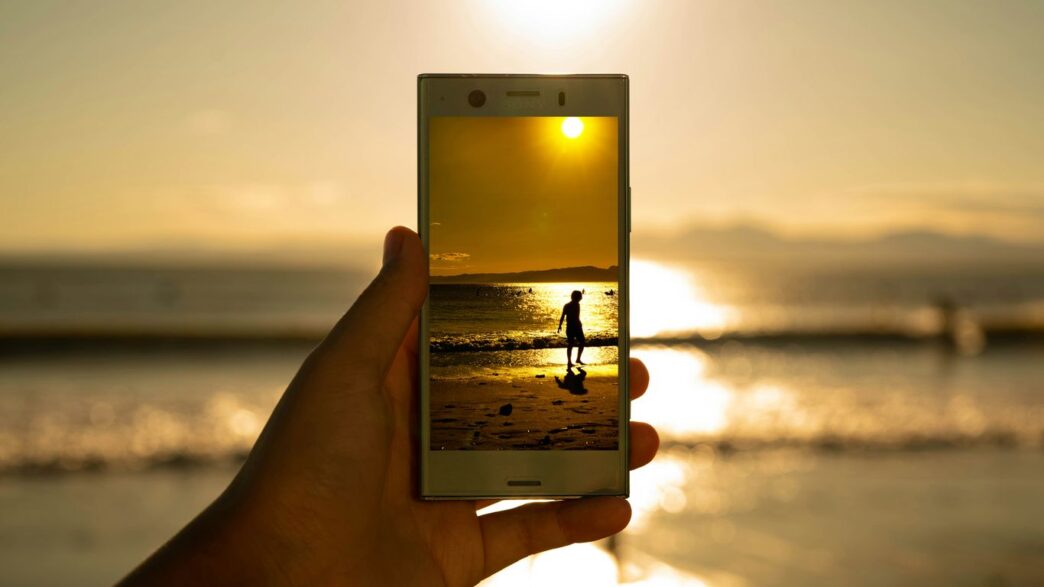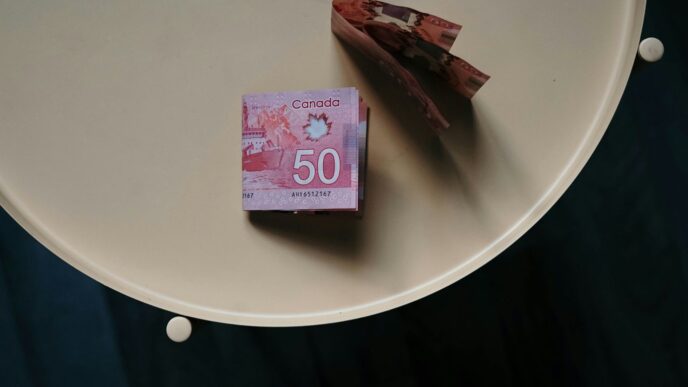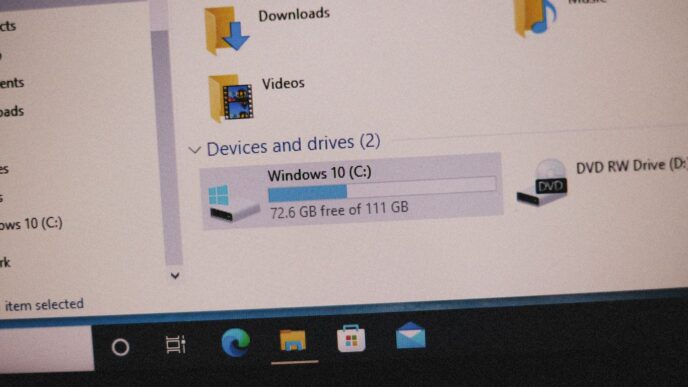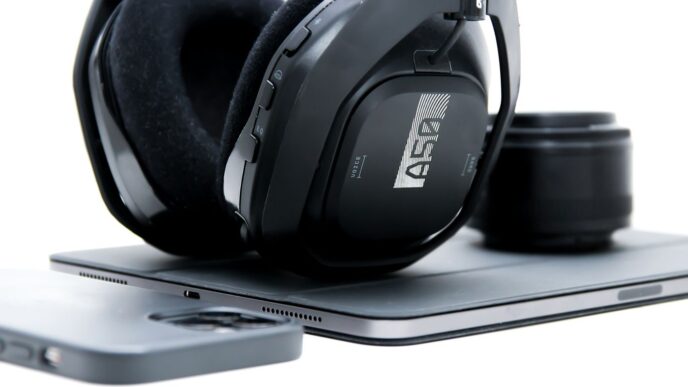Finding a great phone that fits comfortably in your hand and pocket can feel like a quest these days. Most phones seem to be getting bigger and bigger, but there are still some solid options if you prefer a more compact device. We’ve looked at a bunch of phones to figure out which ones are the best small phone 2025 has to offer. Whether you need something for one-handed use or just prefer less bulk, this list should help you find your next device.
Key Takeaways
- The Samsung Galaxy S25 is highlighted as a top choice for an Android compact flagship, balancing size with performance.
- For iPhone users, the Apple iPhone 16e is presented as a smaller, more affordable option compared to larger flagship models.
- Google’s Pixel 9a is recommended for those seeking good value in a compact smartphone, especially for its camera and AI features.
- Foldable phones like the Samsung Galaxy Z Flip 6 and Motorola Razr models offer compact designs that expand for larger screens.
- Screen size under 6.3 inches and a weight around 180 grams are common benchmarks for what’s considered a ‘small’ phone in 2025, though exceptions exist for foldables.
1. Samsung Galaxy S25
Alright, let’s talk about the Samsung Galaxy S25. If you’re on the hunt for a smaller phone that doesn’t skimp on power, this one’s definitely worth a look. It’s pretty much the go-to compact flagship for 2025. I spent some time with it, and honestly, it felt really good in my hand, super easy to use with just one thumb. Plus, it slips into a pocket without any fuss, which is a big win.
What really sets it apart is how light it is. We’re talking 162 grams – that’s almost 20% lighter than some other phones that claim to be compact. It genuinely feels like it weighs next to nothing when you’re holding it. You’re also getting the latest Snapdragon 8 Elite processor, a screen that gets nice and bright, and AI features baked right into the system. The only real bummer is the battery life; it’s just okay, not amazing. It landed pretty far down the list in our battery tests, so don’t expect it to last forever on a single charge.
When it comes to cameras, most small phones stick to two lenses, but the S25 throws in a third one – a telephoto lens with 3x optical zoom. Even for someone like me who isn’t a total camera buff, the setup is pretty impressive. It scored really well in our camera benchmark tests, which is great news if you like snapping pics.
Here’s a quick rundown of what you get:
- Compact 6.2-inch size
- Snapdragon 8 Elite processor with 12GB RAM
- New Galaxy AI features
- Triple camera system (wide, telephoto, ultrawide)
- 4000mAh battery
Samsung is also promising seven years of software and security updates, which is pretty wild and makes this phone a solid investment for the long haul. If you want the smallest, lightest Android flagship out there and don’t mind a so-so battery, the Galaxy S25 is a fantastic choice. It really does feel like Samsung listened to people who miss genuinely small phones. You can check out more details about its Galaxy AI features on their site.
2. Google Pixel 9a

Alright, let’s talk about the Google Pixel 9a. This phone continues Google’s tradition of packing a lot of punch into a more affordable package. It’s not exactly tiny, with its 6.3-inch screen, but it definitely feels manageable in the hand, especially with that nice curve on the back. I’ve used it quite a bit, and honestly, I haven’t had to do any awkward hand gymnastics to reach things.
What really makes the Pixel 9a stand out is the value. For around $499, you’re getting the same Google Tensor G4 chip that’s in the pricier Pixel 9 phones. That means smooth performance for everyday tasks, gaming, and all those neat AI tricks Google is known for. Plus, you get a pretty decent dual-camera system that takes photos that are surprisingly close to what the flagship Pixels can do. And get this: Google is promising seven years of software updates, which is pretty wild for a phone in this price range. It’s a solid choice if you want that pure Android experience without breaking the bank. You can find more details about its features on the Google Pixel 9a page.
Here’s a quick rundown of what you get:
- Display: A bright and vivid 6.3-inch Actua OLED screen with a 120Hz refresh rate. It looks great, though some might find the bezels a bit chunky.
- Performance: Powered by the Google Tensor G4 chip, paired with 8GB of RAM. It handles multitasking and apps with ease.
- Cameras: A capable dual-camera setup, including a 64MP main sensor, that punches above its weight class.
- Battery: Expect over 24 hours of battery life, which is seriously impressive.
- Updates: Seven years of major OS and security updates are included.
Now, it’s not perfect. The plastic back can get smudgy, and the charging speed isn’t exactly lightning-fast. Also, it uses an older version of Gorilla Glass, which might not be as tough as newer options. But for the price, the Pixel 9a is a really compelling option for anyone looking for a great Android phone that doesn’t feel like a compromise.
3. Apple iPhone 16e
Well, Apple did something a little unexpected this year and dropped the iPhone 16e. It’s kind of like a spiritual successor to the old iPhone SE, but it fits right into the iPhone 16 lineup. Honestly, I was hoping for a new iPhone Mini, but this is probably the next best thing if you want a smaller phone that doesn’t cost an arm and a leg.
The iPhone 16e is the cheapest new iPhone you can buy directly from Apple, starting at $599 for the 128GB model. For that price, you get a 6.1-inch screen and it’s pretty light, weighing in at just 167 grams. It’s got the same A18 chip as the regular iPhone 16, though with one less GPU core, and a solid 48MP main camera. The catch? It’s the only camera on the back – no ultra-wide or telephoto here. You also won’t find MagSafe or mmWave support, but those are the main trade-offs to get it down to this price.
It’s a pretty neat little phone that should still feel fast and smooth for years to come. Plus, it supports Apple Intelligence, so you get all the new software smarts that the other iPhone 16 models have. It’s a good option if you want that core iPhone experience in a smaller size with up-to-date hardware without breaking the bank.
Here’s a quick look at what you get:
- Display: 6.1-inch OLED, 60Hz refresh rate
- Processor: Apple A18 chip with 8GB RAM
- Camera: 48MP main camera (no ultra-wide or telephoto)
- Connectivity: No MagSafe, no mmWave 5G
- Price: Starts at $599
4. Samsung Galaxy Z Flip 6
Okay, so the Samsung Galaxy Z Flip 6. This one’s a bit of a throwback, right? It folds in half, just like the old-school flip phones, but with all the modern tech packed inside. It’s a really neat way to get a big screen experience that still fits in your pocket.
When it’s all folded up, it’s surprisingly small. You can still do stuff like check notifications or even snap a quick photo without unfolding it, thanks to that handy cover screen. It’s not like you can do everything on it, but for quick tasks, it’s pretty useful. Samsung really refined the design here, making it a bit thinner than the last model, and it feels good in the hand. Plus, it’s got that Snapdragon 8 Gen 3 chip, so it’s fast. Really fast.
Here’s a quick look at what you get:
- Display: A big 6.7-inch main screen when unfolded, and a 3.4-inch cover display for quick checks.
- Performance: Powered by the Snapdragon 8 Gen 3 for Galaxy, so no lag here.
- Camera: A solid 50MP main camera and a 12MP ultrawide. Good for everyday shots.
- Battery: A 4,000mAh battery, which is better than before, though charging isn’t the quickest.
- Durability: It’s got an IP48 rating for dust and water resistance, which is a first for this line.
- Software Support: Samsung promises seven years of updates, which is pretty amazing.
Now, it’s not perfect. There’s no telephoto lens, which is a bummer if you like zooming in on things. And yeah, it’s still pretty expensive because, well, it’s a foldable. But if you’re after that unique flip phone style with modern power, the Z Flip 6 is definitely one to check out. It’s a fun device that balances a big screen with a small, pocketable form factor.
5. Motorola Razr Ultra (2025)
Okay, so the Motorola Razr Ultra (2025) is kind of a big deal in the flip phone world this year. It’s like Motorola took their old Razr idea and just crammed all the latest tech into it. This is Motorola’s first flip phone with a really high-end processor, the Snapdragon 8 Elite, which means it’s not just a pretty face; it can actually keep up with pretty much anything you throw at it.
It’s got this big 7-inch folding screen, which is pretty sweet, and then there’s a smaller screen on the outside. You can actually use a lot of apps on that outside screen, which is handy if you just need to check something quick without unfolding the whole thing. They’ve also put in some nice materials, and it comes in some cool Pantone colors, so it looks pretty sharp.
Here’s a quick look at what you get:
- Performance: Top-tier stuff thanks to the Snapdragon 8 Elite. No lag here.
- Displays: A big, bright 7-inch main screen and a useful 4-inch cover display.
- Charging: Really fast 68W wired charging, which is great.
- Durability: It even has an IP48 water resistance rating, which is pretty rare for a foldable.
Now, it’s not perfect. The cameras are decent, but they’re not going to blow you away, especially if you’re trying to zoom in on stuff far away. And while the AI features are there, they feel a bit unfinished, like they’re still working on them. Plus, it’s definitely on the pricier side, but you are getting a flagship foldable experience. If you want the best of the flip phone world and don’t mind the cost, this one’s a strong contender.
6. Motorola Razr (2025)

Motorola really brought the flip phone back in a big way, and the Razr (2025) is a solid choice if you’re after that compact, foldable experience without completely breaking the bank. It’s not quite the top-tier Razr Ultra, but it still packs a punch for its price point.
This phone is all about getting that nostalgic flip action with modern tech. It’s a great way to make your phone pocket-friendly again, which is something we haven’t seen much of lately. Flipping it open just feels cool, you know?
When you unfold it, you get a pretty decent-sized screen, around 6.9 inches, which is good for watching videos or browsing. And the outside screen is useful too, letting you check notifications or reply to messages without having to flip it open every single time. It’s a smart design choice that makes the whole experience smoother.
Under the hood, it’s got a capable MediaTek chip that handles everyday tasks just fine. You’re not getting the absolute fastest processor out there, but for social media, emails, and most apps, it’s more than enough. The cameras are decent too, though maybe not as fancy as the Ultra model’s. You get a good main camera and an ultrawide, which covers most of your photo needs.
Here’s a quick look at what you get:
- A bright and clear 6.9-inch main display.
- A handy external screen for quick checks.
- A design that’s lighter than many other foldables.
- It comes in at a pretty attractive $699 price tag.
Now, there are a few trade-offs to get it to this price. The screens are a bit smaller than the Ultra, and the processor isn’t the absolute latest. Also, if you’re someone who takes a ton of photos with telephoto lenses, this might not be your jam. And honestly, if you don’t enjoy the whole open-and-close routine, a regular phone might be a better fit. But for a compact, stylish flip phone that won’t empty your wallet, the Razr (2025) is definitely worth a look.
7. iPhone Air
Apple really did something interesting with the iPhone Air. It’s a bit of a head-scratcher at first glance because it sports a 6.5-inch screen, which isn’t exactly what most people think of as ‘small’. But here’s the trick: it’s incredibly thin, measuring just 5.6 mm, and weighs a mere 165 grams. When you hold it, it genuinely feels more compact than its screen size would suggest. It’s like they engineered the bulk right out of it.
This phone is a masterclass in making a larger screen feel manageable in the hand. It’s not for everyone, especially if you’re a mobile photography buff, as it only packs a single 48MP main camera. Also, the battery life might have you reaching for a charger sooner rather than later if you’re a heavy user. You might want to consider a MagSafe battery pack for longer trips.
Here’s a quick look at what makes it stand out:
- Design: Ultrathin at 5.6 mm, making it a joy to carry.
- Display: A vibrant 6.5-inch Super Retina XDR screen with a high screen-to-body ratio.
- Performance: Powered by the speedy Apple A19 Pro chip.
- Price: Available starting at $899, which is quite a bit for a single camera phone, but you’re paying for that unique thinness and lightness.
If you’re looking for a phone that feels surprisingly light and slim despite having a good-sized display, the iPhone Air is definitely worth a look. It’s a different approach to what a compact phone can be, focusing on thinness and weight rather than just screen diagonal. You can find more details about its features on the Apple website.
8. Google Pixel 8a
Okay, so the Google Pixel 8a. This one’s a bit of a throwback now that the 9a is out, but it was a really solid choice for anyone wanting a smaller phone without breaking the bank. It packed a lot of the flagship Pixel goodness into a more manageable size.
When it came out, it was pretty impressive for the price. You got a nice, bright screen – good for watching stuff or just scrolling through your feed. The camera was also a big plus, taking photos that were surprisingly good for a phone in this category. Plus, Google’s AI smarts were starting to show up, making things like photo editing a bit more fun and easier.
Here’s a quick look at what it offered:
- Display: A decent-sized screen that was bright and colorful.
- Performance: It used the same main chip as some of the higher-end Pixels at the time, so it felt pretty zippy for everyday tasks.
- Camera: A capable dual-camera setup that delivered good shots, especially in decent lighting.
- Software: You got that clean Android experience Google is known for, with timely updates.
Now, it wasn’t perfect. The design, while okay, wasn’t exactly groundbreaking, and some folks found the bezels around the screen a bit chunky. Charging speeds were also just average. But honestly, for the money, it was hard to complain too much. It was a great option if you wanted a reliable, smaller Android phone that took good pictures and didn’t cost a fortune. Even with newer models available, the 8a still holds its own as a budget-friendly compact device.
9. Apple iPhone SE (2022)
Okay, so the iPhone SE from 2022. It’s definitely a small phone, no doubt about it. If you’re someone who really misses the days of smaller phones and doesn’t want to deal with a giant slab in your pocket, this one might catch your eye. It’s got that classic iPhone look with the home button and a 4.7-inch screen, which feels tiny compared to most phones these days.
It’s basically an iPhone 8 with a much newer brain inside. That means you get decent performance for everyday tasks, and it’ll still get software updates for a while. But, and this is a big but, it’s showing its age in a few key areas. The battery life, for starters, isn’t great. You’ll probably be looking for a charger by the afternoon if you use your phone a lot. And the camera, while okay in good light, isn’t going to blow you away, especially when you compare it to newer phones. It also doesn’t have the same level of water resistance as the more expensive iPhones, so be careful around liquids. It’s a budget-friendly way to get into the Apple ecosystem, but you are making some real compromises to get there. If you need something basic and small, it’s an option, but honestly, for a bit more cash, you can get a much more modern experience elsewhere. Check out the iPhone 16e review for a more current, albeit slightly larger, Apple option.
10. Asus Zenfone 10
Okay, so the Asus Zenfone 10. This phone is kind of a unicorn in today’s market, which is mostly filled with giant screens. It’s genuinely small, which is a big deal for people who don’t want a phone that takes up their whole pocket or requires two hands to use. It packs a surprising amount of power into its compact frame.
When you look at the specs, it’s pretty solid for its size. You get a decent processor that can handle most apps without a hitch. It’s not going to win any awards for being the absolute fastest phone out there, but for everyday tasks and even some light gaming, it holds its own. The display, while small, is usually pretty vibrant, making photos and videos look good.
Here’s a quick rundown of what you generally get:
- Processor: Capable of handling daily tasks smoothly.
- Camera: Decent for quick shots, though not professional grade.
- Battery: Usually holds up well for a day’s use, which is impressive given the size.
- Build: Feels sturdy and well-made.
Now, the main thing to consider with the Zenfone 10 is its size. While it’s a huge plus for many, it can also be a drawback. The compact screen size presents a challenge for comfortable and ergonomic operation, hindering the user experience for certain tasks. If you’re someone who spends a lot of time typing long emails or playing complex mobile games, you might find it a bit cramped. It’s a trade-off, for sure. If you’re looking for a genuinely small phone that doesn’t completely skimp on performance, the Zenfone 10 is definitely worth a look, especially if you can find it at a good price. It’s a nice option if you’re tired of the phone arms race and just want something that fits your hand. You can check out more about Asus’s offerings here.
So, What’s the Verdict on Small Phones?
Alright, so we’ve looked at a bunch of these smaller phones, and it’s pretty clear that you don’t have to give up a lot to get a device that fits nicely in your hand or pocket. Whether you’re after the latest tech, a solid camera, or just something that won’t break the bank, there are some really good options out there in 2025. It’s not all about giant screens anymore; sometimes, a smaller phone just works better for how we actually use our devices day-to-day. So, if you’ve been feeling like phones are getting too big, you’ve got choices. Go ahead and pick the one that feels right for you.
Frequently Asked Questions
What makes a phone considered ‘small’ in 2025?
In 2025, a ‘small’ phone generally means it has a screen size of 6.3 inches or less. While phone screens have gotten bigger over time, these devices offer a more compact feel, making them easier to hold and fit into pockets.
Why would someone choose a small phone over a larger one?
People often prefer small phones because they are easier to use with one hand, fit better in pockets or small bags, and can sometimes be more affordable. They offer a convenient and less bulky experience.
Do small phones have less powerful features than big phones?
Not necessarily! Many small phones pack the same powerful processors, great cameras, and advanced features as their larger counterparts. You don’t always have to sacrifice performance for a smaller size.
Are foldable phones a good alternative if I want a smaller device?
Yes, foldable phones can be a great option. When folded, they are quite compact, but they unfold to reveal a larger screen, giving you the best of both worlds. However, they tend to be more expensive.
What is the best small phone if I’m on a budget?
For budget-friendly options, the Google Pixel 9a and the Apple iPhone 16e are excellent choices. They offer a lot of great features for their price, making them a smart buy for those looking to save money.
How do I know if a small phone is right for me?
Consider how you use your phone. If you value one-handed use, portability, and a device that doesn’t feel heavy or bulky, a small phone is likely a good fit. Trying one out in a store can help you decide.














